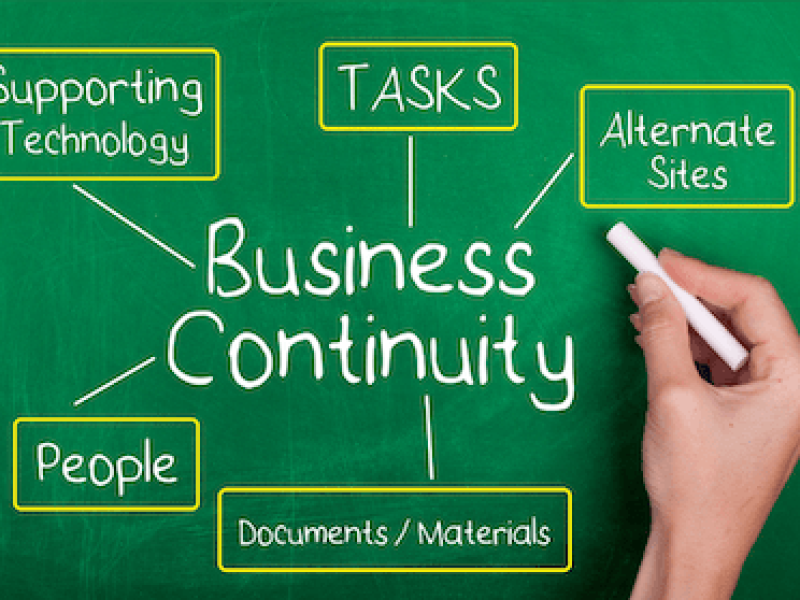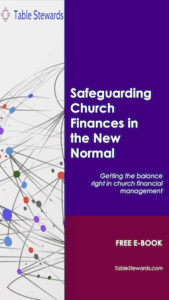Introduction
How then do we identify and manage conflicts of interest in churches and charities?
Church members and charity beneficiaries have come to expect that these organisations act in their best interests and make decisions accordingly.
When people give, they are placing a high degree of trust in churches and charities to make the right decisions to further their espoused mission and objectives.
When decisions are compromised by decision-makers conflicts of interests, at the expense of what is best for the church or charity, that can have far reaching effects.
Effects can range from financial loss e.g. through poor value for money in contract letting, fraud through collusion from a compromised recruitment, legal challenges through disputes over contract awards, and reputation damage with loss of trust of members and beneficiaries.
Churches and charities therefore need to guard against unmanaged conflicts of interest, to protect the integrity of their decision making.
This article takes you through what a conflict of interest is, its consequences, and how to identify and manage conflicts of interest.
Table Stewards uses a light-hearted scene setting approach to introduce its topics, but if you would prefer to dive straight into any part of the article, please click the relevant link in the table of contents above.
Scene Setting
The Learning & Development Committee is assembling for their pre-meeting with Coach Emmanuel before the masterclass.
Brother Badtrus: Hey, all! Sorry I’m late! I was helping my uncle finalise his company’s tender for the church hall carpets, which he is submitting today.
Sister Mary: In other words, you were providing your uncle with insider information so that his company can win the contract for carpeting the church hall? I’m sure that’s not allowed!
Sister Jane: Your wife is on the tender committee, isn’t she?
Brother Badtrus: Yes, but that’s of no consequence. My uncle has been running his family business for over 20 years, providing great quality carpets at great value. He has low overheads and can undercut any competitor!
Sister Mary: Does your family also own shares in the company?
Brother Badtrus: That is personal information that has nothing to do with tendering for carpeting a hall!
Sister Jane: Well, if your uncle’s company wins the contract, how can you prove that your “help” and your wife being on the tender committee has nothing to do with it?
Coach Emmanuel: Good question! It is important that decisions are made in the best interest of the church. Any conflicts of interest with decision makers should be identified and managed, so that decisions can be made fairly, transparently and objectively. Let’s explore this important topic further in the masterclass today!
What is Conflict of Interest?
A conflict of interest is defined as a situation in which the personal interest of an individual or organisation might adversely affect a duty owed to make decisions for the benefit of a third party.
That means that an employee, volunteer, committee or board member that is responsible for making a decision in a church or charity, can be at risk of not making a fair and transparent decision because of their personal interests in the outcome of that decision.
Another definition, based on generally accepted standards, is that a conflict of interest is a set of circumstances that creates a risk that an individual’s ability to apply judgement or act in a role is, or could be, impaired or influenced by a secondary interest.
The important thing to note is that conflict of interest is about decision-makers and any relationship that may put them at risk of not making a decision solely in the best interest of the organisation they represent.
This can be due to their actual, potential or perceived conflicted position.
Even when the decision-maker does not benefit from the decision being made, the presence of a conflict of interest means that they can still be perceived as having undue influence or inability to exercise the right judgement.
Being in a position of conflict of interest does not mean that the decision-maker has done something wrong. However, the conflict of interest must be identified, disclosed, avoided or managed properly.
Types and Examples of Conflict of Interest
Conflicts of interest may occur due to the following:
- Financial conflict
- Personal conflict
- Loyalty conflict
A financial conflict occurs where a decision-maker stands to gain financial benefit from the decision being made.
For example, where a church or charity board member has a significant shareholding in an organisation that is being considered for a contract award alongside others.
A personal conflict occurs where a decision-maker has a close personal relationship with a beneficiary of the decision to be made.
For example, a church is deciding on charities in the community to donate funding to, and the CEO of one of the shortlisted charities is the sibling of a member of the decision making committee.
A loyalty conflict occurs where a decision-maker has competing loyalties between the organisation they owe a primary duty to, and some other person or organisation.
For example, a board or committee member (serving in an unpaid voluntary capacity) is part of a committee in which tenders are being considered for a contract award, including one from their own employer that really needs that business.
What are the Consequences of Conflicts of Interest
Unidentified or unmanaged conflicts of interest affects decision making and can mean that a decision made is not in the best interest of the church or charity, but unfairly benefits the conflicted party.
This brings decision making into disrepute and can cause reputation damage to the church or charity.
Churches and charities rely on people’s trust in their missions, for membership and giving.
The failure to put the best interest of the church or charity at the heart of decision making is a breach of the trust placed in the decision making bodies.
Any perceived or actual breach of that trust through reports of individuals exercising undue influence or conflicts of interest, can have far reaching effects.
Where poor integrity or perceived culture of a church is misaligned with members values, they could just walk away and stop being a part of that mission both personally and financially.
Potential members and givers may also be cautious if they become aware of unmanaged conflicts of interest affecting the integrity of dealings in the church or charity.
Unmanaged conflicts of interest could result in legal challenge especially where a contract is awarded unfairly.
There is also a risk of fraud where conflict of interests are not managed and remain undetected, as conflicted parties can do deals between themselves for their own benefit rather than that of the church or charity.
For charities, including churches registered as charities, that fall under the UK Charity Commission statutory regulation, trustees are required by law to manage conflicts of interest.
Trustees must make decisions based only on what’s best for their charity. Trustees should not allow personal interests, or the interests of people or organisations connected to them, to influence these decisions.
It is therefore pertinent that conflicts of interests are properly identified, avoided where possible or managed effectively.
How to Identify and Prevent Conflicts of Interest
The identification of conflict of interest has to be prompted, before it can be prevented or managed.
Conflicts of interest are largely about relationships. The majority of conflicts of interests are not identifiable without the affected person or someone else volunteering the information.
However, to volunteer information on any potential conflicts of interest, people need to be educated on what it is, and the circumstances that can lead to conflicts of interests.
A positive organisational culture that values and supports the volunteering of such information is also necessary.
All potential conflicts of interest must be declared at all times, and in advance of decision making on the matters where the conflicts may arise.
This allows the decision making body to make an informed decision on how to prevent the conflict of interest from having an impact on the integrity of the decision to be made.
The onus is on the staff/board member/committee member to declare the potential conflict of interest in advance of the decision making activity.
It is therefore important for churches and charities to have a Conflicts of Interest Policy, to help identify conflicts of interest so that measures can be put in place to prevent conflicts from impairing the integrity of decision making.
Conflict of Interest Policy
The “Conflict of Interest” policy should cover all aspects of administrative operations including purchasing and contracts, and all potential parties including staff, board members, committee members, and leaders.
Best practice in most organisations is to avoid all forms of conflict of interest directly with staff. That is, no purchases should be made from, or contracts entered into with staff.
An overriding factor to be considered is how the conflict of interest will be perceived by the beneficiaries of the organisation e.g. members of the public, congregation etc., in light of the values that the organisation claims to uphold.
The Conflict of Interest policy should originate from the board of trustees or directors that govern the church or charity, and be regularly reviewed and updated.
The policy should be widely communicated to all those its applies to, and incorporated into wider policies, e.g. staff handbook, board and committee induction packs.
As a minimum, a conflicts of interest policy should include:
- Definition of conflict of interest, including the type of relationships that can create conflicts of interest e.g. family, business partners, company shareholdings etc.
- The stance of the church or charity on handling conflicts of interest, and how that aligns with the values of the organisation, and the governing documents.
- Definition of the type of interests that should be declared, including business and personal interests and those of their spouses, partners, family and close relatives.
- When to declare conflicts of interest e.g. at the start of each board or committee meeting, and whenever a decision-maker at any level, realises that there is a conflict of interest on any matter or transaction they are involved in.
- How to declare conflicts of interest e.g. using standard conflict of interest declaration forms, as a mandatory part of procurement exercises.
- How to record conflicts of interest e.g. in board/committee minutes of meetings, staff records, contract management systems.
- A requirement to keep a register of interests for board members, and decision making bodies, especially where required by law.
- A requirement to maintain a gifts and hospitality register, and how the information will be used.
- Process to follow to manage declared conflicts of interest.
- For charity organisations governed by statute, trustees personal responsibility and legal duty to declare conflicts of interest and act only in the best interests of the charity, with a reference or link to the statutory duties.
- How to handle cases where a conflict of interest suddenly arises on an existing contract that previously had no such conflicts, possibly as a result of a change in the organisation structure, staff rotation or board/committee member rotation.
- How compliance with the policy will be monitored and enforced, and by whom.
Managing Conflicts of Interest
Managing conflicts of interest starts with a viable conflict of interest policy, that enables board and committee members, staff and contractors to declare all financial, personal and loyalty conflicts of interest that could affect decision making, procurement or contract management.
Good practice requires conflicts of interests declarations to be completed annually in addition to declarations as conflicts arise, such as during a procurement exercise.
Have a clear process for taking action on declared conflicts of interest
The board of trustees / directors of the church or charity can decide on how best to handle any conflicts of interest declared by board members in line with statutory requirements and their governing documents.
For staff, non-statutory committees, volunteers and contractors, there should be a recognised reference point. This could be a senior officer or committee that decides on the appropriate handling of any reported conflict of interest cases.
Conflicts of interest do not necessarily have to be eliminated. They can be managed based on the risk to the decision being made.
For example, a committee member declares conflict of interest in an organisation being considered for a contract on the basis of their sibling having a 3% share in the organisation. This may be considered low risk especially if the value of the contract is not significant to the organisation where the sibling holds the 3% share.
Some organisations do not rule out engaging with near relatives of staff/board/committee members such as spouses, siblings and in-laws, but would consider each potential conflict of interest on a case by case basis.
Some criteria used in assessing the level of risk to attach to conflict of interest cases include:
- The nature and extent of the role of the party that has or may have a conflict of interest e.g. a contract where a board member has a conflict may automatically be deemed as high risk.
- The value of the contract(s) which will be, or may be, affected.
- The strategic importance of such contracts.
- The contractual or other relationship between the party affected by potential conflict of interest and the organisation.
- The actual or potential impact of the identified conflict of interest.
- Any inherent, pre-existing procedures or contractual mechanisms that would prevent any adverse impact arising from the conflict of interest.
- Availability of potential additional means of managing or mitigating the risk of conflict of interest materialising and /or the impact of the conflict of interest if it were to materialise.
- The likelihood of the conflict of interest materialising in reality.
All decisions made regarding potential conflict of interest cases must be recorded in a format that will withstand future audit and scrutiny.
Overall, there are 3 main ways to handle conflicts of interest situations to maintain integrity in decision making:
- Ask the conflicted party or parties to withdraw from the decision making process, so that they can’t influence the decision to be made.
- Decide not to proceed, as whatever decision made may not be seen to be transparent or objective.
This could be where there is a significant risk that the conflict of interest could give rise to circumstances that are inconsistent with the roles, responsibilities, and values of the church or charity, as well as the public interest.
For example where the nature of conflicts of interest declared on a short list of contracts that casts doubt on the integrity of the selection process for the contracts.
- Continue with the decision making with the conflicted party present if their conflict of interest is assessed as low risk, and their participation in the decision making process will not compromise the integrity of the decision made.
Implement ongoing monitoring arrangements
Ongoing management arrangements should be in place for cases where a decision has been made to go ahead with the procurement or contract when the outcome of a review of a potential conflict of interest is deemed to be low risk.
A decision made once can have an ongoing impact. For example a decision made to award a contract creates a need for ongoing contract management.
Just because an original contract award decision was made with integrity, does not mean that conflicts of interest may not arise in the subsequent management of the contract.
Changes in personnel e.g. contract manager, new staff, etc. can create inherent conflicts of interest. Compliance with the conflict of interest policy at all stages where conflicts may arise is therefore required.
Ongoing monitoring of compliance is a necessary internal control to detect any non-compliance or breach of policy.
For environments where high risk decisions are being made regularly, it is a must to have effective and ongoing monitoring, e.g. where lots of projects are being delivered with high value goods, services and contract procurement.
The consequences for non-compliance should be clearly articulated in the policy.
Non-compliance should be dealt with and the consequences activated, thereby helping to foster an ongoing culture of compliance.
Conclusion
Conflicts of interest can have a negative impact on the integrity of decisions made in churches and charity operations, if not identified and managed effectively.
A conflicts of interest policy that is comprehensive, aligned with the governing documents, well communicated and monitored is vital for identifying and managing conflicts of interest.
By assessing the impact of declared conflicts of interest and taking appropriate action, with ongoing monitoring, churches and charities can have assurance that decisions made are transparent, fair and in their best interest.
Read our related articles on:
- why churches need good internal controls,
- why risk management is necessary in churches and charities ,
- 6 steps to developing a positive culture for effective church administration;
- good governance in church administration – 9 areas to get right, and
- How to prevent and detect collusion.








